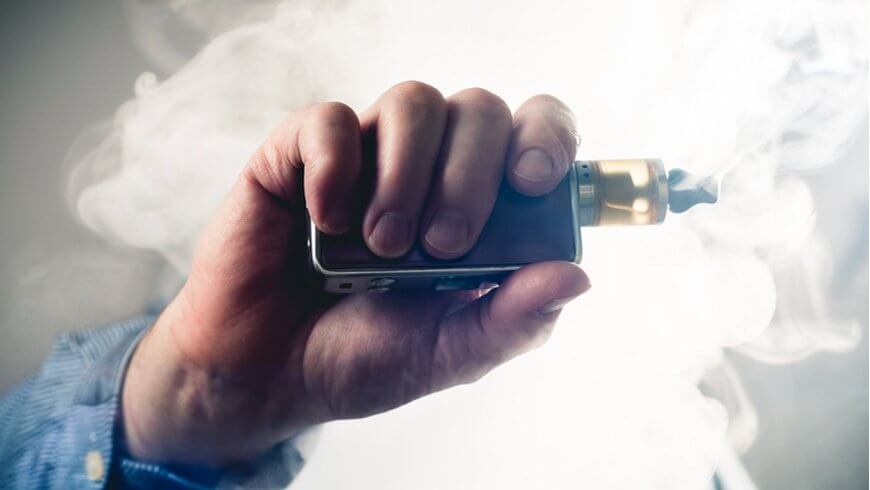Introduction
In the ever-evolving landscape of nicotine enjoyment, vaping has emerged as a prevalent successor to traditional cigarette smoking. A question that often arises in smoke-filled conversations and debates is how vaping compares to the experience of smoking cigarettes, particularly regarding nicotine intake. This article seeks to illuminate the equivalency between the puffs of a 5% vape and the familiar sensation of enjoying a cigarette.
Understanding Nicotine Concentration
When you look at vape e-liquids, you'll see percentage numbers like "5%" displayed prominently. This refers specifically to the nicotine concentration - the amount of nicotine contained in the liquid. For example, a 5% e-liquid has 5% nicotine by total volume. Put another way, there are 50 milligrams of nicotine per milliliter of liquid.
How does this compare to traditional cigarettes? On average, smoking a cigarette delivers between 1 to 1.8 milligrams of nicotine. However, it's not only about the raw nicotine content. There's also the concept of "nicotine bioavailability" - the actual amount of nicotine absorbed into the bloodstream when inhaling. While cigarette smoke has high bioavailability, the absorption rate can vary greatly when vaping, depending on the device and method of inhalation.
All in all, the percentage figures denote the total nicotine content in vaping e-liquids. But the nicotine concentration doesn't directly translate to what gets absorbed by your body during use. Many other factors come into play.

Vaping vs Smoking: A Comparison of Nicotine Absorption
When you inhale vaporized nicotine from a vape device, the process within your body is quite different from inhaling nicotine via cigarette smoke. There are several key physiological distinctions:
Firstly, vapor tends to penetrate deeper into the lungs before being absorbed into the bloodstream. Smoke particles are heavier and deposit nicotine quickly through the upper respiratory tract. The vapor pathway allows nicotine to reach further into the lungs prior to making it into the blood.
Secondly, the ingredient propylene glycol in vaping e-liquids enables far more efficient transfer of nicotine across membranes than combustible tobacco. This helps boost absorption rates significantly compared to other nicotine products.
Moreover, unlike consistent factory-made cigarettes, there is substantial device variability in the vaping world. Nicotine delivery can differ greatly depending on the type of vape someone uses - from compact pod-based systems to high-powered mod setups. For instance, sub-ohm tanks in mods typically release more vapor and provide bigger nicotine hits.
Lastly, personal vaping techniques make a real impact. Aspects like the depth and length of puffs, holding the vapor in the mouth prior to inhalation, and overall puffing frequency affect how quickly nicotine gets processed by the body. Generally, longer and deeper puffs result in faster absorption.
Clearly, there are significant differences between vaping and smoking when it comes to how human bodies take in and absorb nicotine. Key factors range from the inner mechanics of absorption kinetics to device types and individual vaping styles. These all contribute to quite distinct nicotine intake profiles.
Calculating Puffs to Cigarettes Ratio
Trying to precisely equate a certain number of vape puffs to smoking one cigarette is challenging. This is due to significant variability in real-world vaping and smoking habits.
For instance, vaping behavior differs widely among individuals - from puff duration and intensity to frequency. Additionally, not all devices deliver nicotine equally; advanced mods can far exceed simpler pod systems. There is also diversity in traditional cigarettes regarding aspects like filter type, tobacco processing methods, etc.
However, reasonable ballpark estimates for equivalence can be developed based on available research and expert input:
One estimate assumes an average smoker finishes a cigarette in around 10 to 15 puffs in 5 to 8 minutes. Considering a vaper using a 5% nicotine e-liquid in a basic refillable pod device, they may need somewhere between 30-50 puffs to ingest a similar amount of nicotine.
For a more advanced vaper using high-wattage mods with sub-ohm tanks, equivalence could be estimated at around 15-25 puffs due to factors like bigger cloud output and deeper inhalation.
Of course, these figures are averages at best. Personal smoking or vaping styles can alter things quite a bit. However, having a reasonable comparison range helps provide context on potential nicotine intakes across different products.

How Personal Smoking and Vaping Styles Impact Nicotine Intake?
When estimating nicotine consumption from vaping versus smoking, what cannot be overlooked is individual user behaviors. Specifically, the way someone smokes or vapes can drastically alter their nicotine intake.
On the vaping side, puffing behaviors make a big difference. Aspects like puff duration (length of each draw) and puff intensity (how hard one inhales) greatly affect absorption rates. Longer, deeper puffs provide more vapor and faster nicotine uptake compared to short, gentle draws.
Additionally, some vapers engage in tricks like holding the vapor in their mouths before inhaling or purposefully taking smoother, thinner draws for flavor. These stylistic choices modify nicotine delivery as well. Frequency also matters - chain vaping leads to higher intake than occasional puffing.
Similarly, smoking styles influence nicotine absorption, too. Quick, shallow cigarette puffers get less than those who take slow, heavy draws. Mouth-to-lung smoking limits nicotine versus direct-to-lung inhalation. Other user behaviors, like the number of daily cigarettes, can also impact overall consumption.
In essence, the concept of "equivalent puffs" has major limitations due to individual variance. Two people using the exact same product can experience hugely different nicotine exposures based simply on their personal smoking or vaping tendencies.

Health Implications and Misconceptions
There are many swirling myths regarding how much safer vaping is compared to traditional cigarette smoking. The truth about health impacts is more complex.
While early studies suggest vaping exposes users to fewer carcinogens and toxic chemicals than combustible tobacco, the long-term effects are still under investigation. Health authorities continue monitoring e-cigarettes to build more conclusive evidence.
However, the notion that vaping is harmless is certainly a misconception. Nicotine intake through vaping still carries risks like raising blood pressure and heart rate. It can also irritate lung tissues and airways, especially for those with respiratory conditions like asthma.
Additionally, there are wider impacts of nicotine addiction to consider - like increased chances of abusing other substances later on.
While vaping marks a potential harm reduction approach for existing adult smokers, it is by no means risk-free. Comparing nicotine consumption from vaping versus cigarettes involves navigating both facts and popular myths regarding health and safety.
Tips for Transitioning from Smoking to Vaping
For smokers considering making the switch to vaping, carefully evaluating your nicotine needs is crucial. Vaping offers a technology-enabled way to potentially move away from combustible tobacco. But getting off cigarettes requires a thoughtful approach.
- Analyze your current smoking to estimate your present nicotine intake. How many cigarettes do you smoke daily? How many puffs per cigarette on average? This establishes a baseline of your body's nicotine exposure.
- Start with a comparable e-liquid nicotine concentration and vaping style close to your smoking habits - this will ease the shift. For example, longer/deeper cigarette puffs would translate to direct-lung style vaping with similar puff durations.
- Keep adjusting. Monitor your vaping to align overall nicotine satisfaction with your initial smoking levels.
- Track puff counts and play with e-liquid strengths to attain the desired nicotine exposure. Eventually, you may consider gradually lowering concentrations once you are comfortable as a vaper. The key lies in conscious control.
With some self-analysis and disciplined tapering, the switch from smoking to vaping can pave the path away from combustible tobacco while still giving your body the nicotine it may crave.
Final Thoughts
Determining an exact puff-to-cigarette nicotine equivalence is challenging due to individual differences in vaping and smoking behaviors. However, by exploring topics like nicotine concentrations and absorption rates, vapers can become more self-aware of intake.
Careful monitoring of personal puffing habits enables tailoring to meet one's needs or goals, be it switching from smoking or lowering dependence. Ultimately, healthy choices come down to mindfully moderating nicotine consumption and making informed decisions, regardless of whether one vapes, smokes, or does neither. While the math may remain variable, putting in the effort to understand your usage makes all the difference.






COMMENTS